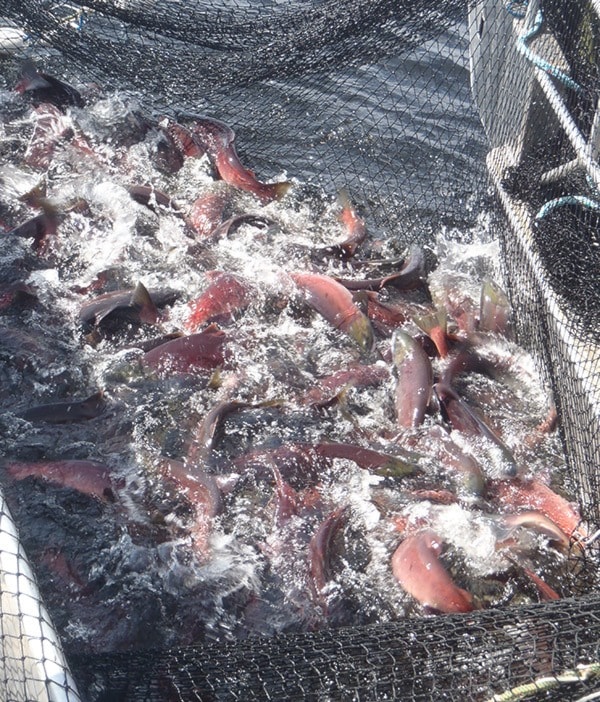Lake Babine Nation (LBN) Chief Wilf Adam was prepared to hear that the sockeye salmon return would be low this year, but he wasn’t prepared for the official numbers that came out recently.
Adam said that this year’s Babine sockeye return is the lowest in living memory.
Normally, the sockeye return to Lake Babine is between one and two million fish, Adam explained. This year, estimates place the return at around 540,000 fish. Minimum return from a conservation standpoint is around 400,000.
Babine Lake produces 85 per cent of Skeena sockeye, but with returns forecasted to be not much higher than minimums required to fill channels and tributaries, LBN is being put in the position of choosing between food stock and the health of the salmon population.
Adam places the responsibility for the situation squarely on the shoulders of provincial and federal governments, as well as the Department of Fisheries and Oceans (DFO).
“They dump mine tailings into our lake, strip forests from along our streams, overfish our wild sockeye, sign agreements that permit Alaska to fish our sockeye even when they are at critically low levels, eliminate important scientific monitoring and research activities, ignore their own policies, and when the inevitable happens, let us choose between the food necessary to get through the winter and ensuring enough sockeye spawn”, Adam said.
The annual First Nations salmon fishery is central to indigenous culture and well-being. Locally, LBN members are concerned for what the low salmon return will mean for food stocks this year.
Adam said that the unless the situation changes, LBN members can expect a minimal number of salmon, “mainly enough for sustenance for the winter.”
The past two years had been very successful years for the LBN fisheries, with numbers large enough to sustain a commercial salmon market.
The collapse of the salmon return also means that the recreational Babine Lake salmon fishery is currently closed.
“Typically the sockeye season opens Aug. 1 for sport anglers on Babine Lake,” said Jeff Palm, conservation officer for the Bulkley Stikine Zone. Unless things drastically change, the season will remain closed.”
A July 17, 2013 notice from the DFO reads:
“Until further notice, the waters of Babine Lake, Babine River, Fulton River, and Pinkut Creek will remain closed to the retention of sockeye salmon. In-season forecasts for Skeena sockeye are below the threshold to allow for retention in recreational fisheries as per the Skeena Decision guidelines in the 2013 North Coast Salmon Integrated Fisheries Management Plan. This closes the entire Skeena River and all its lakes and tributaries to angling for sockeye salmon.”
The cause of the sockeye salmon decline is not fully understood, although conservationists have highlighted the damage done by Alaskan fisheries.
See July 24, 2013 Lakes District News for story on issue with Alaskan fisheries.
